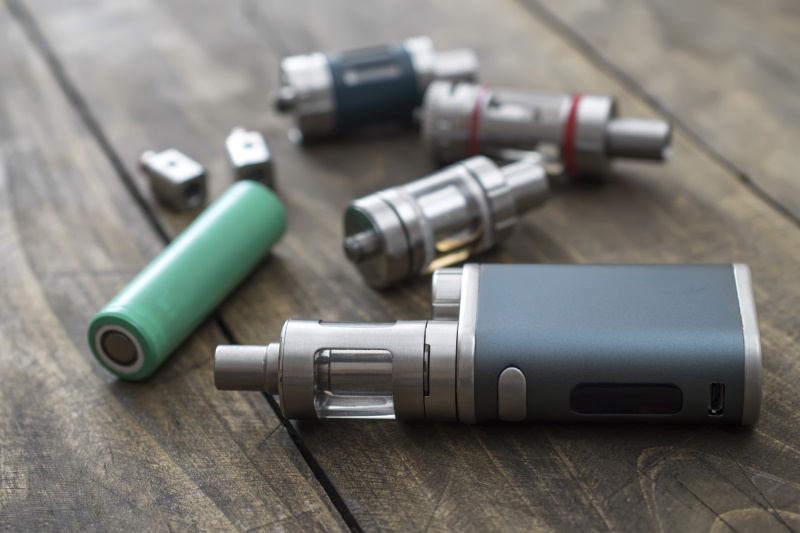Science
Otago Research Reveals Vaping Device Design Fuels Normalisation

A new study from the University of Otago has uncovered how the design of vaping devices contributes to the normalisation of vaping, particularly among young Māori. Conducted by Dr. Robin Quigg, the research highlights that the discreet nature of these devices allows users to vape in a variety of locations, including public buildings and sacred spaces.
Dr. Quigg investigated the vaping habits of participants aged between 18 and 26 years, many of whom have never smoked traditional cigarettes. The study involved engaging with seven whakarōpū, or collective groups, within a kaupapa Māori framework. Findings indicated that more than half of the participants had used vapes, often in settings where smoking is prohibited.
“The design of vaping devices encourages on-going use and nicotine addiction,” Dr. Quigg stated. “Our findings suggest the discreteness of these devices has led to their normalisation among young people.” Participants reported instances of vaping in sensitive areas, such as the urupā and marae, locations where such actions conflict with cultural practices.
Vaping has become a common sight in various environments, with individuals often choosing to use their devices even when designated smoking areas are available. “You would see a lot of people who are smoking cigarettes move out to the smoking zone, but a lot of people who are vaping won’t,” one participant noted. This trend raises concerns about respect for tikanga, or cultural customs, within Māori communities.
Calls for Regulatory Changes
In light of these findings, Dr. Quigg is advocating for stricter regulations on vaping devices in Aotearoa, New Zealand. She emphasised the urgent need for policy changes to address how these products are designed and marketed. “Current policy struggles to keep pace with the evolving nature of nicotine products,” she said.
Dr. Quigg proposed several measures, including larger device sizes and designs that focus on therapeutic benefits rather than lifestyle appeal. She also suggested that flavours should be modified to emit less appealing odours. Such changes could help reduce the concealability of vaping devices, thereby protecting indoor environments like libraries and lecture theatres, as well as outdoor areas such as urupā and playgrounds.
While regulatory changes to device design are important, Dr. Quigg cautioned that they would not be sufficient on their own. “Stronger measures must be implemented to reduce the appeal of vaping,” she asserted. The complexity of the vaping landscape necessitates a comprehensive approach to safeguard young people from nicotine addiction and its associated risks.
The findings from this study reflect a growing concern over vaping’s impact on youth culture, particularly within Māori communities. As the conversation around vaping continues, the emphasis on understanding device design and its implications will be crucial in shaping future policies and public health strategies.
-

 World4 months ago
World4 months agoTest Your Knowledge: Take the Herald’s Afternoon Quiz Today
-

 Sports4 months ago
Sports4 months agoPM Faces Backlash from Fans During Netball Trophy Ceremony
-

 Lifestyle4 months ago
Lifestyle4 months agoDunedin Designers Win Top Award at Hokonui Fashion Event
-

 Entertainment4 months ago
Entertainment4 months agoExperience the Excitement of ‘Chief of War’ in Oʻahu
-

 Sports4 months ago
Sports4 months agoLiam Lawson Launches New Era for Racing Bulls with Strong Start
-

 World5 months ago
World5 months agoCoalition Forms to Preserve Māori Wards in Hawke’s Bay
-

 Health4 months ago
Health4 months agoWalking Faster Offers Major Health Benefits for Older Adults
-

 Lifestyle4 months ago
Lifestyle4 months agoDisney Fan Reveals Dress Code Tips for Park Visitors
-

 Politics4 months ago
Politics4 months agoScots Rally with Humor and Music to Protest Trump’s Visit
-

 Top Stories5 months ago
Top Stories5 months agoUK and India Finalize Trade Deal to Boost Economic Ties
-

 Health2 months ago
Health2 months agoRadio Host Jay-Jay Feeney’s Partner Secures Visa to Stay in NZ
-

 World5 months ago
World5 months agoHuntly Begins Water Pipe Flushing to Resolve Brown Water Issue









